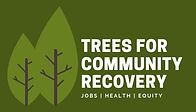
CONNECTING COMMUNITY RESILIENCE AND ECONOMIC RECOVERY
In the summer of 2020, as we reconciled ourselves to a long-term quarantine and watched the growing impacts of a global economic unraveling, many people projected that no matter who was elected President of the United States in November, the new Administration would be compelled to initiate a massive economic stimulus initiative. Assuming that job creation would be the dominant theme of any stimulus package, Center for Regenerative Solutions and others anticipated a huge opportunity to scale natural climate solutions by illustrating the perfect alignment that exists between climate and community resilience work with the national imperative to create good jobs and stimulate economic recovery. What follows is an overview of the founding of a new initiative—Trees for Community Recovery (T4CR)—and its efforts to raise awareness and support of urban and community forests and grow the economic sector that maintains them.
Natural Climate Solutions: Far & Away The Biggest Job Creators
Long before the current Green New Deal was proposed, solid data already existed to demonstrate the many co-benefits of job creation in the “green infrastructure” sector. During the recession of 2008, the Obama administration and a number of think tanks examined employment data to determine which sectors could create the most jobs with federal investment. This analysis was then taken up by various academic researchers, who scoured the labor data of past periods of U.S. economic recovery. Robert Pollin at the University of Massachusetts analyzed jobs created per $1M federal dollars spent across a broad range of different conventional and “green” infrastructure sectors.
Among Pollin and co-authors’ most striking findings was that the most effective investments to quickly create jobs were in the natural resources sector: agriculture, forestry, etc. In many cases, the number of jobs per $1M dollars that could be created were 2-3x the number of jobs developed through other infrastructure categories like roads and bridges, new public facilities, or other large construction projects. Across a wide range of related natural resource sector work—from fire hazards in our increasingly fire-prone forests and reclaiming degraded rural lands and waterways, to planting, protecting and maintaining urban forests, environmental stewardship turns out to be a great investment in creating living wage jobs and restoring or conserving critical natural resources. Not surprisingly, this is the same type of work that was the initial focus of the New Deal’s Civilian Conservation Corps in the early 1930s...Read More.

Comments